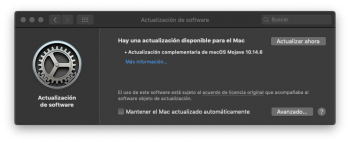I am no expert but have been looking at this with the cMP after some other members commented on the high cpu use when playing 4k videos. Both my CMP3.1 and cMP5.1 will have up o 400% cpu use when playing a 4k 60 fps video made on an iPhone. On investigation it appears Mojave may be (solely?) using the Intel Quick Sync built into Sandybridge and later cpus and is not using dedicated graphic cards to encode/decode video. We are using old cpus now and Apple has moved on to rely on Quick Sync and is also using the T2 chip in its latest models. Although my cMP has a quite modern and capable card on Apple's recommended list (RX 580) Mojave makes no use of it for video decoding/encoding since 10.14.1. The fact that it is possible is that there was graphic card hardware acceleration in 10.14.0 but Apple took the decision to remove it on later versions so hardware decoding on the Radeon has been broken since 14.1. It was a little buggy on 14.0. So as the Xeon's do not have Quick Sync the decode/encode is purely reliant on software and cpu grunt. Streaming a 4k Ultra video via Safari/YouTube gives a VTDecoderXPCService CPU use of 32% but all is still pretty smooth.
The 5.1 Mac mini does have a Sandybridge cpu which implement version 1 of Intel's Quick Sync so there should be some H264/MPEG 2 hardware decoding. On my MacbbokAir 4.2 (also Sandybridge) playing the same YouTube 4K video resulted in a VTDecoderXPCService cpu use of 17% - but at half the output resolution of the cMP5.1 - so the question is does it use the hardware acceleration? I am not sure as H264/MPEG-4 and H262/MPEG-2 was not incorporated into Quick Sync until version 3, so the Sandybridge cannot decode these video streams. Playing lower resolution videos results in a cpu use around 11-14%. Playing the iPhone 4k 60 fps video cpu use ramped up to 160% and the fans started running at a higher speed which indicates the cpu is doing all the work. I am not familiar with twitch but have a look at the video codec they are using. If it is H265/MPEG-2 you might get some hardware decoding in from Quick Sync (v1). Any higher order codec will probably just use the cpu. Hope this helps. Does not solve the problem but I suspect we are having to accept that Apple is moving on and getting our older machines to keep up will become more of challenge.
I guess this explains quite well why I am so impressed with Mavericks in terms of 1080p video performance on my MacBook5,1.


